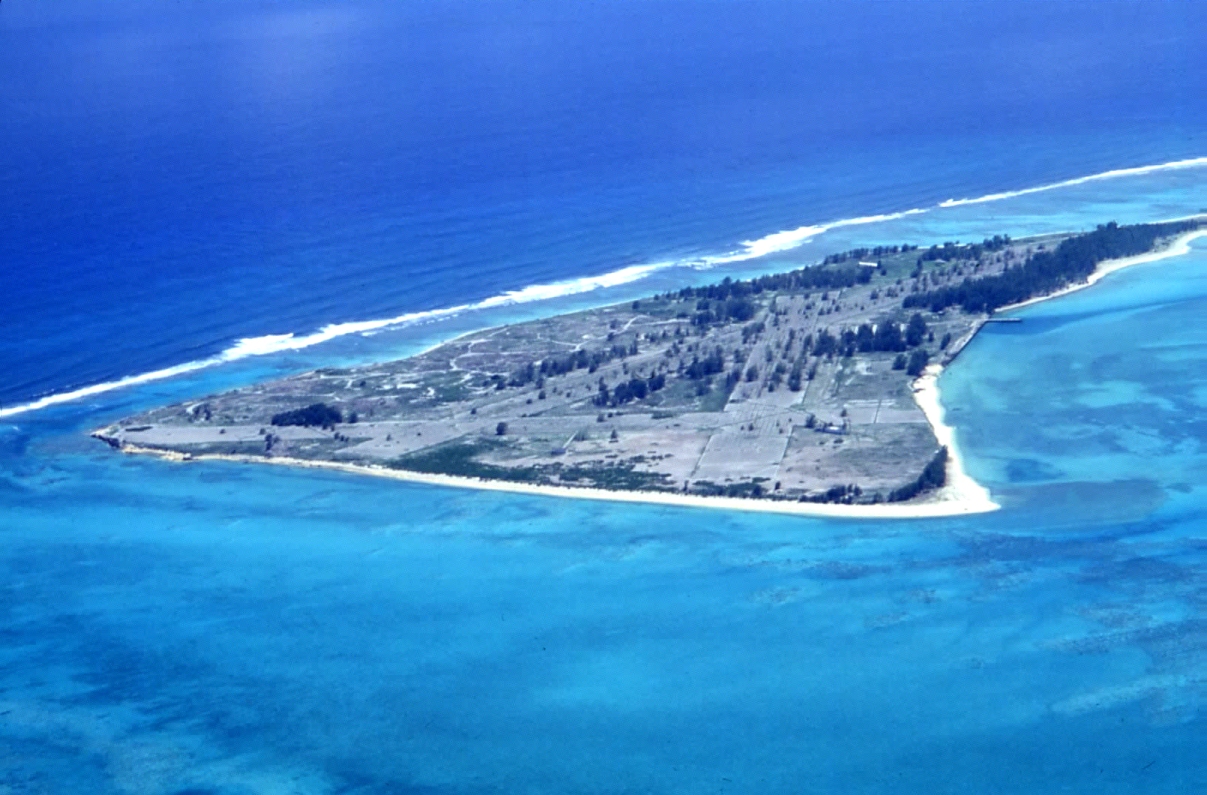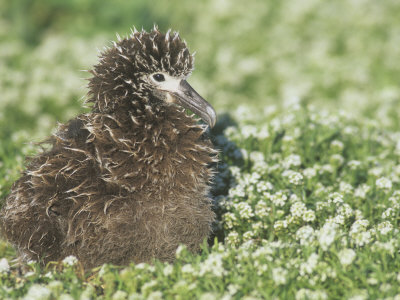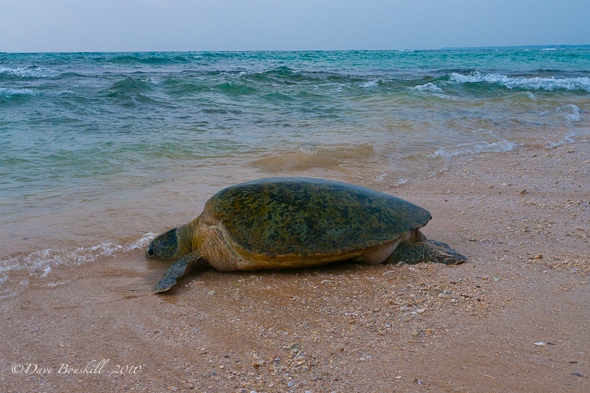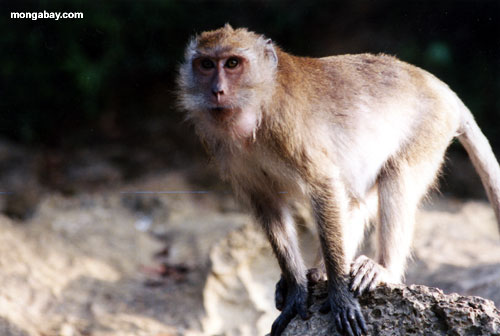On Friday, March 11, Japan was rocked by an earthquake. People were displaced, a nuclear reactor was in trouble, and the world watched as a tsunami flooded Japan, threatened the islands of the Pacific, and ultimately hit the western coasts of North and South America. Chris Rowan pointed out that very little of the devastation resulting from this earthquake was from the initial shaking. This is partly because of Japan's stringent building codes. But mainly because any damage from the seismic waves that sent skyscrapers in Tokyo swaying was dwarfed by the impact of the 10 metre tsunami that hit the Japanese coast less than an hour later."Most of the reporting (both good and bad) that has been done on the earthquake, the tsunami, and the resulting fallout from both has focused on their effects on humans. But humans are just one species affected by these sorts of disasters. I wondered: what happens to animals when faced with such a massive tsunami?
Slowly, a bit of information about various scaley, furry, or feathered critters has begun to trickle out of the affected areas. Kazutoshi Takami, a veterinarian at the Osaka Municipal Tennoji Zoological Gardens, reported last week that several zoos and aquariums were suffering shortages of gas, heater fuel, and food and drinkable water for humans as well as for animals. Also, according to Takami, the Fukushima Aquarium made plans to move their sea mammals and birds to Kamogawa Sea World.
M. Sanjayan of The Nature Conservancy in Arlington, Virginia, told ScienceInsider that the biggest impact on wildlife would be on shorebirds nesting on small islands throughout the Pacific, rather than on the Japanese mainland. Indeed, the majority of wildlife-related news of the tsunami has come from small Pacific islands such as those in the Midway Atoll National Wildlife Refuge.
On Saturday, March 12, Pete Leary, a wildlife biologist for the Fish and Wildlife Service who is stationed at Midway, blogged extensively on the tsunami and subsequent animal rescue operations: "We had all 67 island employees/visitors up here watching the news on BBC and watching our tide gauge data over the internet. We saw that we had about a 5 foot rise in the tide gauge level, but were glad that we couldn't see any water when we looked out the windows.
After looking at a bit of the washover on Sand Island, and setting a crew to work on digging albatross chicks and petrels out of the debris, Greg and I took the boat over to Eastern Island. On the way, we passed thousands of albatross adults and petrels that had been washed into the water and lost their ability to stay dry. Their feathers were messed up by being tumbled over the island and through the vegetation. We pulled some into the boat, but needed to get to Eastern Island, so we had to hope that most of them would paddle to shore.
Eastern Island was mostly washed over, so 10's of thousands of chicks were washed away. I'll have to look at our count numbers from Dec. to figure out how many chicks were in the affected areas. There were dead fish by the hundreds up in the middle of the island. The short-tailed albatross chick must really be wondering what kind of place it lives in because it was washed away from the nest for the second time this year already. This time, it was about 40 yards away from the original nest. It was easy to spot because all the other chicks were washed away in a previous storm. I didn't want to pick the chick up, because it was already stressed and upset, but the parents may not have found it that far from the nest. I put out a sheet of plastic and when it stepped onto it, I gave it a sled ride the 40 yards back to its nest. I hope that's all the excitement that it has for the rest of the season.
There were a lot of chicks and adults buried in debris (mostly dead vegetation). Greg and I were digging out stuck birds all day. We took our volunteers and some people from the visitors group over yesterday and dug out another hundred or so birds. We also found 2 turtles that were washed quite a way up onto the island, which were then carried back to the beach and seemed glad to get back in the water. At least we didn't find any injured Hawaiian monk seals or Laysan ducks. The seals were back resting on the beaches on Friday. Although we lost a lot of wildlife, all of the people who are here because of the wildlife are safe."
The US Fish and Wildlife Service is now estimating that the Midway refuge sustained losses of more than 110,000 Laysan Albatross chicks – representing approximately 22% of chicks born this year – along with an estimated two thousand adults. In addition, thousands of Bonin petrels were buried alive, and thousands of fish were washed ashore where they suffocated. Thankfully, Pete and his staff were able to rescue a handful of birds and turtles, but this is small comfort compared to the loss of entire shorebird nesting sites.
Darwin’s famous Galapagos Islands fared a bit better. Despite the fact that the tsunami struck during high tide, the water rose over 1.7 meters beyond normal levels, flooding buildings along the coastline. UNESCO has reported that the Southwest side of San Cristobal Island, home to a nesting site for marine iguanas, was among the most affected areas of the Galápagos Islands World Heritage site. While some mortality is expected among the iguanas, officials do not expect extensive damage.
What Can We Expect?
While some of the reports are heartening, and many are devasting, more in-depth research into the short- and long-term effects of the tsunami on marine and coastal ecosystems will take much longer. But the 2004 magnitude 9.15 earthquake off the coast of Sumatra, and the resulting tsunami that rippled across the Indian Ocean have been extensively studied, and allow us to speculate regarding possible outcomes of the Japanese earthquake and tsunami.
The Wildlife Trust of India, along with the International Fund for Animal Welfare initiated several investigations following the earthquake and tsunami to assess their impact on wildlife. Overall, they found that damage to wildlife populations was generally limited on the mainland, and slightly worse on the islands. Particularly hard-hit, however, were coral reef systems. Several beaches were washed away, and freshwater habitats were inundated with saltwater. While most of these ecosystems were eventually able to rebound, problems did occur.
For example, one mainland wildlife sanctuary became flooded with saltwater and covered with sand, making is impossible for the various plant-eating ungulates (hoofed animals) to graze. Even worse, with seawater comes toxic pollution.
According to the Wildlife Trust report:
Other grave problems stem from the onslaught of seawater laden with sediments and toxins. Aquifers, the primary source of drinking water, have been contaminated by saltwater, raw sewage, oil, and other pollutants. On the coasts of Indonesia and Sri Lanka, paddies and farm fields are smothered under a crust of salt and silt. Some areas may never recover, for others irrigation and one or more rainy seasons may be enough to flush out the soil. For now farmers are being encouraged to plant salt-tolerant crops, like pumpkins and kale.
In other areas, rather than covering plants with saltwater, the tsunami simply washed all plants away, making it possible for invasive species to take root, quite literally. The change in plant life wasn’t problematic for some species, such as the fan-throated lizard (Sitana ponticeriana), which were able to survive in the new ecosystem. Other species, surely, were not so lucky, but little information is available.
And there were probably other invaders, as well. Furry ones. Large dead trees from distant islands were found washed up on mainland beaches. While there was no danger to beach ecosystems from the trees themselves, since they were dead, they may have carried some critters with them that would eventually colonize mainland coasts. It is well-known that rodents, reptiles, and insects are quite capable of setting up camp in new environments after rafting across the sea.
As we can already tell from the Japan earthquake, birds are particularly vulnerable to tsunamis. But in the 2004 tsunami, it wasn’t all bad news for the birds! In fact, after the seawater receded, it left quite a bit of silt and sediment behind. Some of that sediment settled into pre-existing lagoons and creeks, making them much shallower. This would be bad news for most inhabitants of those lagoons, but great news for wading birds, who now had new places to nest. In one ironic example, the tsunami actually helped reverse human damage to a particular creek:
This creek used to be a local birding area that attracts a large number of migrant waders and the blackwinged stilt (Himantopus himantopus). A few years ago, the Chennai Corporation as part of an effort to beautify the city had dredged and deepened the creek. The waders that had since left the creek had made a re-appearance after the tsunami brought back all the silt!
Other birds didn’t fare so well. A group of birds called the megapodes, which require external sources of heat to incubate their eggs, are found in the Nicobar Islands in the Bay of Bengal. Because they prefer to lay their eggs on sandy ground, over 90% of megapode nests were located within thirty meters of the waterline, prior to the tsunami. Several of the islands that are home to the megapodes were completely washed over, and others very nearly so. As with any bird species, maintaining constant temperature is critical for proper development of the birds within the eggs. Since these birds use external heat, however, the flooding of the nests by cold seawater became problematic for those nests that were closest to the water. Many of the birds that did survive relocated into the interior of the island, settling into evacuated villages. But when the villagers began to return, they were not happy to find the birds nesting around their homes. Even worse, the main source of income for these villagers came from coconut plantations, were were almost entirely washed away. As a result, the villagers turned to hunting and fishing in order to survive. One scientist noted "Each tribal family has one to four airguns. The Nicobar megapode was found to be the most favoured targets of these airguns."
As for shallow water fish, it was initially assumed that the tsunami would be beneficial for them as well. Researchers hypothesized that the dead and decaying material in the sea would result in a huge growth in plankton populations. This hypothesis was later confirmed, when scientists observed massive increases in plankton-feeding fish species, like sardines. Increases in fish populations, coupled with reductions in motorized boats in the area, brought more dolphins to the coastal waters as well.
There was more good news, for the sea turtles of Sri Lanka. Initial reports had confirmed that there was extensive damage to nesting sites, hatcheries, and adult foraging habitats due to the tsunami. However, the number of nesting females, at least at one site, remained unchanged in the following year. It is possible that the adults were simply at sea when the tsunami hit. The good news for these turtles should be understood in context, however. The researchers were quick to note that most sea turtle species in the region were already endangered, and that "the fate of sea turtles in the region is more likely to be determined by long-term human influences than by infrequent natural catastrophes."
When it came to non-human primates, the outcomes were mixed. In 2000, 40 groups of long-tailed macaques (Macaca fascicularis umbrosa), comprising 814 individuals were observed, with group size varying from 7 to 98 animals. While the groups that lived mostly in the interior of the islands were relatively unaffected, coastal groups were not as lucky. In particular, these groups lost quite a few juvenile macaques. In 2000, the adult to juvenile ratio was approximately 1:1, but following the tsunami, it had dropped to 1:0.4. The reduction in the proportion of juveniles will have long-term consequences for the social organization and popluation structure of those groups, as fewer juvenile females means fewer baby monkeys in subsequent generations. It is possible, that the reduction in macaque numbers wasn’t due to the tsunami itself, but rather came about as a result of the washing away of coastal fruit trees, leaving fewer resources and food for the macaque groups.
If the outcome of the 2004 Indian ocean tsunami for wildlife can be at all predictive of what is to come for the Japanese tsunami, there may be a few lessons to learn. First, coastal ecosystems were, in general, worse off than interior ecosystems. Second, islands fared far worse than the mainland. Already, data from Japan and the Pacific islands has begun to display this pattern. Third, many species seem to be able to either benefit from or at least persevere through such natural disasters. And where one species suffers, another might benefit.
Fourth, even if a given species isn’t directly affected by a natural disaster, there are often repercussions due to the complex interactions among different species, between plants and animals, and between predators and prey. Rather than asking about the outcome for a specific species, it makes more sense to ask about the health of larger ecosystems, in the wake of a tsunami.
And humans are a fundamental part of most ecosystems – which brings us to the final, and most important lesson. Human behavior can help ecosystems rebound following a tsunami, or it can continue the destruction. It was partially due to a moratorium on fishing – one that people generally respected – that allowed the sardine populations to thrive in the plankton-rich water, which allowed the dolphin populations to thrive, in turn, on the sardines. On the other hand, the hunting of the megapodes in the Nicobar Islands made it even harder for those birds to survive. And the tsunami might not have been terrible for the sea turtles, but they were endangered to begin with, thanks to human activity. As devastating as natural disasters can be to natural ecosystems, they are nothing compared to the long-term effects of human behavior.
Source: Scientific American










No comments:
Post a Comment
Many thanks for your contribution. Where applicable, we will respond to you here.